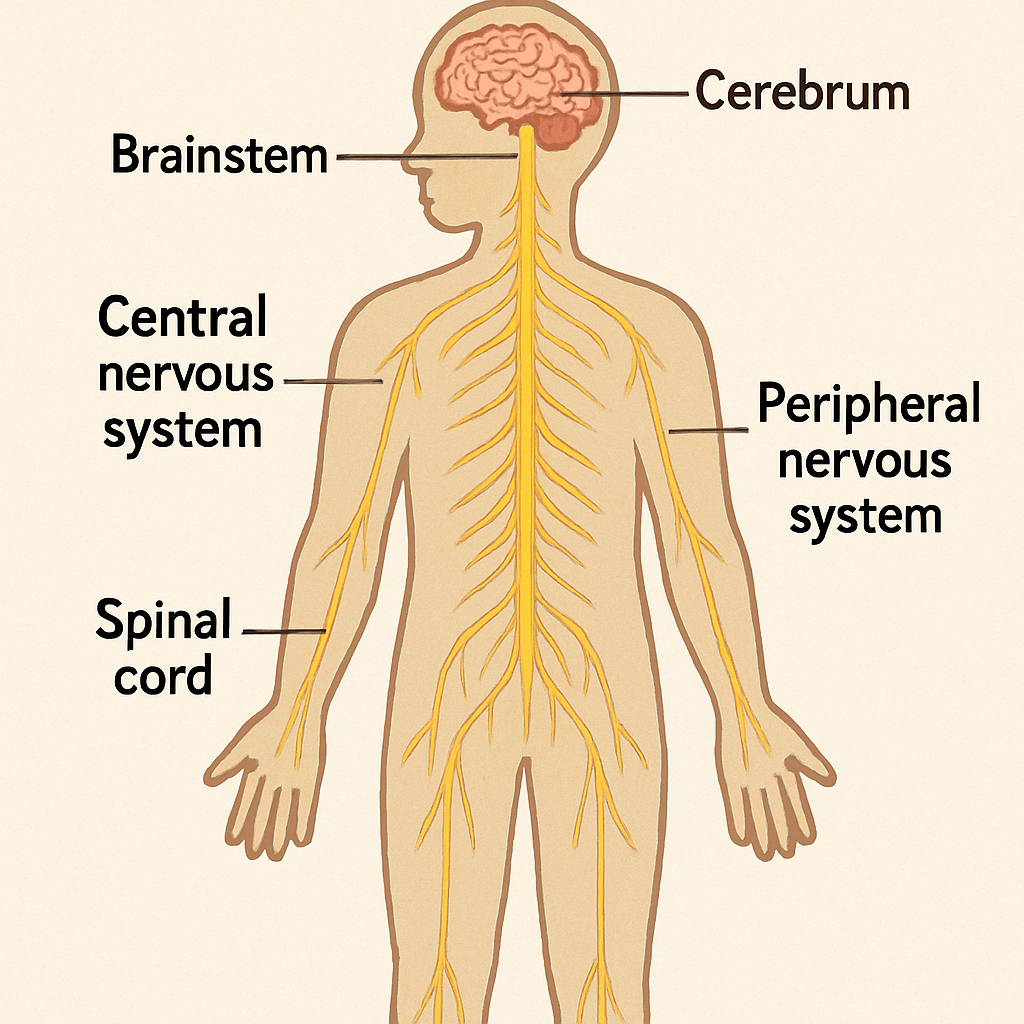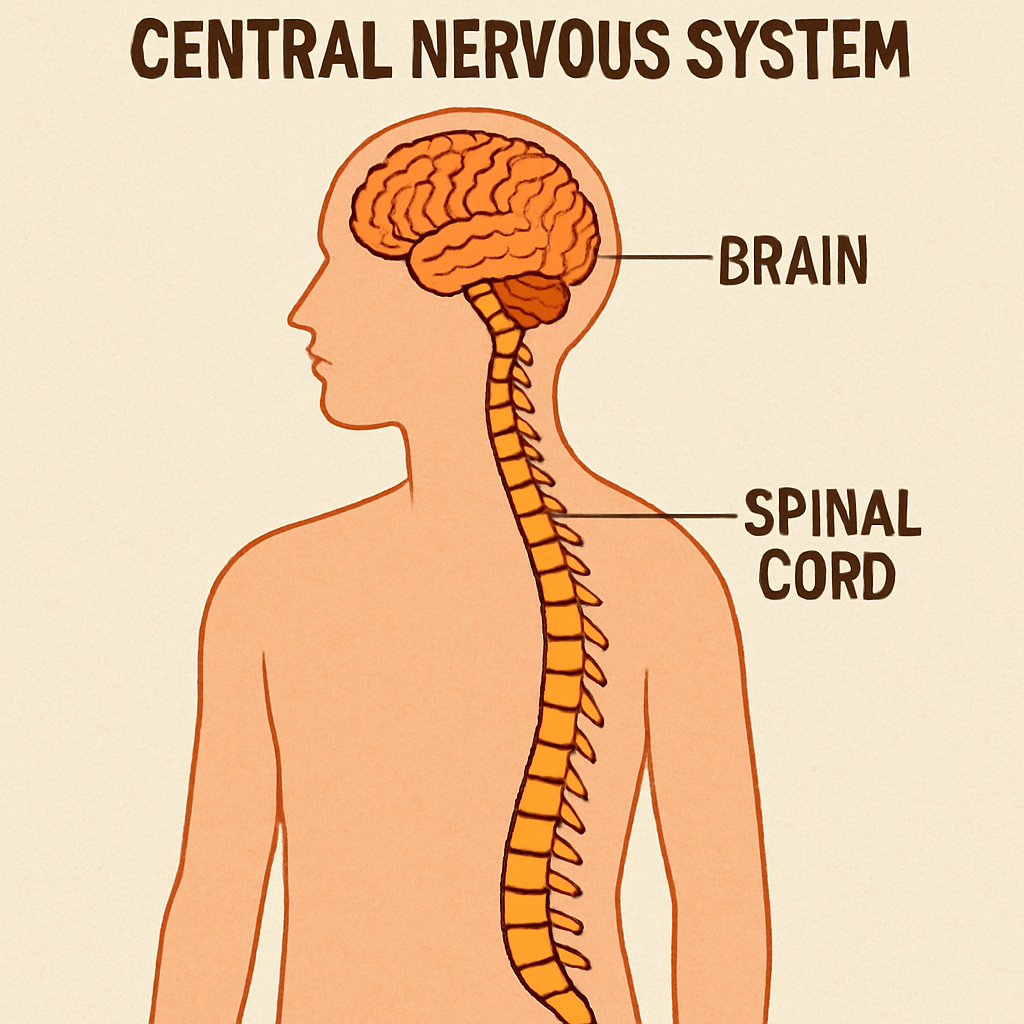The human nervous system is a complex and intricate network that plays a vital role in how we think, feel, and move. It is responsible for sending, receiving, and interpreting information from all parts of the body. There are two major parts of the nervous system: the central nervous system (CNS) and the peripheral nervous system (PNS). Understanding the differences between these two systems is crucial for grasping how our bodies function.
 What Is the Nervous System Made Up Of?
What Is the Nervous System Made Up Of?
The nervous system is made up of specialized cells called neurons, which transmit signals between different parts of the body. In addition to neurons, the nervous system also consists of other cells that support and nourish neurons.
Components of the Central Nervous System (CNS)
The central nervous system is composed of the brain and the spinal cord. It is the control center for the body and is responsible for processing and sending out information.
- Brain: The brain is the most complex organ in the body. It is responsible for our thoughts, memory, emotion, touch, motor skills, vision, breathing, temperature, and many other functions that regulate our body.
- Spinal Cord: The spinal cord is a long, thin, tubular structure made up of nervous tissue. It extends from the brainstem down the back and acts as a communication highway between the brain and the rest of the body.
 Components of the Peripheral Nervous System (PNS)
Components of the Peripheral Nervous System (PNS)
The peripheral nervous system consists of all the nerves that lie outside the central nervous system. It connects the CNS to the limbs and organs. The PNS is further divided into two main parts:
- Somatic Nervous System: This part of the PNS controls voluntary movements and transmits sensory information to the CNS.
- Autonomic Nervous System: This system controls involuntary body functions and is subdivided into the sympathetic and parasympathetic nervous systems, which have opposite effects on the body.
What Does PNS Consist Of?
The peripheral nervous system consists of nerves and ganglia outside the brain and spinal cord. The full form of PNS in biology refers to the Peripheral Nervous System. It includes:
- Cranial Nerves: These are nerves that emerge directly from the brain, including the brainstem, and innervate parts of the head and neck.
- Spinal Nerves: These are mixed nerves that carry motor, sensory, and autonomic signals between the spinal cord and the body.
- Ganglia: These are structures containing a number of nerve cell bodies, typically linked by synapses, and often forming a swelling on a nerve fiber.
The Role and Significance of the Peripheral Nervous System
The peripheral nervous system plays a crucial role in our survival by allowing the brain and spinal cord to receive and send information to other areas of the body. This system is significant because it connects the central nervous system to the limbs and organs, enabling the body to respond to stimuli from the environment.
Significance of Peripheral Nervous System in Human Beings
The PNS is essential for carrying out various functions, including:
- Sensory Function: It helps in receiving sensory information from the environment and relaying it to the CNS.
- Motor Function: It transmits motor commands from the CNS to the muscles to initiate movement.
- Autonomic Functions: It regulates involuntary functions like heartbeat, digestion, and breathing.
Difference Between Central Nervous System and Peripheral Nervous System
The CNS and PNS have different roles but work together to make the body function properly. Here are some key differences:
- Structure: The CNS is made up of the brain and spinal cord, while the PNS consists of all the nerves outside the CNS.
- Function: The CNS processes information and makes decisions, while the PNS carries out the instructions from the CNS and brings sensory information to it.
- Protection: The CNS is protected by the skull and vertebral column, while the PNS is not protected by bone, making it more vulnerable to injury.
Classification of Peripheral Nervous System
The peripheral nervous system can be classified into:
- Sensory (Afferent) Division: Carries sensory information from the body to the CNS.
- Motor (Efferent) Division: Carries motor commands from the CNS to the muscles and glands.
Autonomic Nervous System
- Sympathetic Nervous System: Prepares the body for stressful or emergency situations ("fight or flight" response).
- Parasympathetic Nervous System: Conserves energy and restores the body to a state of calm ("rest and digest" response).
Nervous System Organs and Anatomy
The nervous system organs include the brain, spinal cord, and all the peripheral nerves. Understanding the anatomy of these parts helps in identifying how they work together.
Nervous System Diagram
A labeled nervous system diagram can help visualize the different components and their connections within the CNS and PNS.
Neuropathy and Footwear
Neuropathy is a condition that affects the nerves and can lead to pain, numbness, and weakness, often in the hands and feet. People with neuropathy may benefit from wearing supportive shoes specifically designed for their condition.
Shoes for Neuropathy
Proper footwear can alleviate some symptoms of neuropathy by providing support and reducing pressure on sensitive areas. Neuropathy shoes are designed to cushion the feet and provide stability.
Conclusion
Understanding the differences between the central nervous system and the peripheral nervous system is essential for comprehending how our bodies function. By knowing what these systems consist of and their roles, we can better appreciate the complexity and efficiency of the human body. Whether it’s managing stress through the autonomic nervous system or choosing the right neuropathy footwear, awareness of these systems can lead to better health and well-being.








